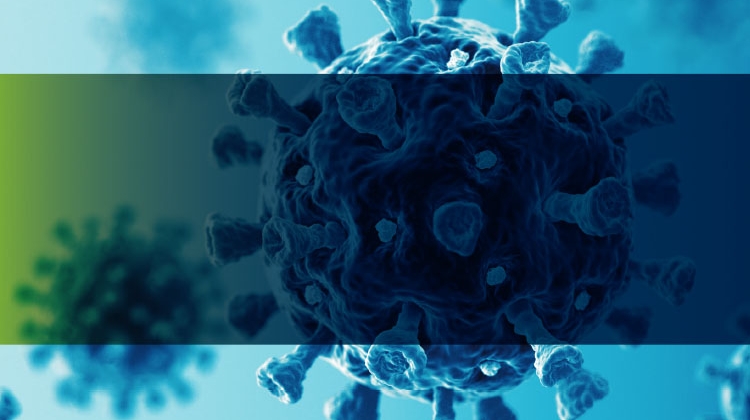Pandemic Preparedness & Business Continuity

This article updates a 2006 Pharmaceutical Engineering® Online Exclusive article titled “Avian Flu—Is My Company Prepared?” by Wendy Haines and Martin Rock.
Several months prior to the publication of the 2006 PE article, the World Health Organization (WHO) stated that companies should identify pandemic teams, develop plans, and run drills to ensure preparedness.2 It may be hoped that such recommendations have helped stakeholders in the pharmaceutical, biotechnology, and medical device industries successfully prepare for the challenges of COVID-19. However, as the trajectory of this pandemic remains uncertain and new pandemics may emerge, industry members must continue to vigilantly evaluate and refine their preparedness strategies.
Communication Is Key
The importance of communication is critical in a pandemic. Emotions are likely to run high, and clear lines of communication help people follow a scientifically sound path forward. In particular, it is essential to combat rumors by communicating correct, reliable information that helps individuals make intelligent, rational decisions about behaviors that spread infections.
There is no financial or business benefit in waiting until the last minute to prepare.
While COVID-19 was emerging as a worldwide threat, how many people went to work or boarded airplanes even though they were sick? How many caregivers let children who were under the weather go to school and daycare? How many healthy and asymptomatic individuals took unnecessary risks such as ignoring public health recommendations for social distancing, using disinfectants improperly, or not routinely practicing hand hygiene? Many people seemed to not understand that these individual events can have a “snowball” effect, hastening the spread of infection.
Particularly in times of crisis, members of the pharmaceutical, biotechnology, and medical device industries should make sure that their communications effectively convey high-quality information to regulators, employees, patients, healthcare providers, and others. For example, to control the spread of COVID-19 and maintain safe working conditions, it is important to be proactive in educating employees about hygiene standards and procedures, what to do if exposed to sick people, and working from home when possible.
As part of preparedness efforts and throughout crises, companies should use credible resources to inform their communications and also share these resources with others. Among the best resources for information about COVID-19, other infection threats, and how to respond are international and national health authorities, such as:
- WHO
- US Centers for Disease Control and Prevention
- US FDA
- US Environmental Protection Agency (EPA)
- US National Institute of Allergy and Infectious Diseases (NIAID)
- EMA
- Health Canada
Adaptive Planning
Let us use Y2K to illustrate the value of preparedness planning. As the 20th century drew to a close, businesses of all types faced the possibility that an established practice of programming computers using two-digit codes for years (e.g., “77” for 1977) would lead to chaos on 1 January 2000 (e.g., soft-ware calculating ages from birthdates might interpret the date “1/1/00” as the first day of 1900). Once the potential “year 2000” (Y2K) threat was identified, individual organizations, industries, and governments all had to initiate strategies to prevent the problem and plan for contingencies if prevention efforts were not fully successful. From a business standpoint, early investment in planning was generally the most cost-effective strategy. Well before Y2K, computer programmers earned decent salaries, but as Y2K drew closer, their salaries rose astronomically due to the basic law of supply and demand. Therefore, the organizations that hired or contracted programmers at the end of the decade had to pay more than those that started sooner. Even though the worst fears about Y2K did not manifest, we can still learn something from this event: There is no financial or business benefit in waiting until the last minute to prepare, and you cannot adequately prepare for this type of contingency when it is already upon you.
As an essential first step in their COVID-19 response, companies can “arm” themselves with the knowledge of the pandemic, using guidelines and mandates set forth by WHO, CDC, EPA, NIAID, and other health authorities to help with planning and strategic actions.
If an organization does not yet have a pandemic risk management group, they should create one. Business leaders also need to ensure guidance on pandemic preparation is up to date in their business continuity plans. If these plans are to succeed, they must be flexible so they can be adjusted to appropriately handle whatever develops. In 1996, Nitin Nohria, the Richard P. Chapman Professor of Business Administration at Harvard Business School, wrote that the avian flu pandemic would be characterized as “survival of the adaptive.”3 He suggested that companies would have to rely on decision makers capable of applying “new ways of problem solving in an unpredictable and fast-changing environment.”
In January 2020, Nohria, who is now the Dean of the Harvard Business School, revisited these themes in an update to his 2006 article, stressing that risk management teams and contingency plans are “necessary but not sufficient. In the complex and uncertain environment of a sustained, evolving crisis, the most robust organizations will not be those that simply have plans in place but those that have continuous sensing and response capabilities.”4
People throughout the pharmaceutical, biotechnology, and medical device industries are highly innovative and often “think outside the box,” and they can troubleshoot problems in real time. These are essential skills during a global pandemic. Nohria has suggested we consider Marine expeditionary forces to be a model for pandemic preparedness: The Marines are highly effective in mission-critical situations because they practice as a team until everyone on the team can lead the team.3, 4
Collaboration plays an important role in strategic business planning and operations during and after a global pandemic. A combination of cross training, an adaptive risk management group, and support by all employees and contractors aids in honing the effectiveness of preparedness planning. During strategic planning, companies should conduct a self-evaluation, asking key questions such as the following:
- What keeps us running and successful?
- What are our supply chain issues?
- Who are our critical staff, and how they can serve their clients during a pandemic?
Establishing the Business Case
A balanced and sober analysis of strategic and business management issues is an essential part of pandemic preparedness. An organization should have both an “offense” strategy to advance its business interests and a “defense” strategy for protecting business continuity and cushioning the enterprise while managing or coping with contingencies.
With proper planning, the defensive or preventive strategies designed for a major crisis scenario also may enhance normal operations.
During pandemics and other crises, a company’s business opportunities may include increased sales to meet market demands for products and services, and this may in turn lead to other benefits—for example, a company’s response to customer demands during a pandemic could spin off to new market segments, particularly if the organization strives to achieve robust operational flexibility.
With proper planning, the defensive or preventive strategies designed for a major crisis scenario also may enhance normal operations. For example, as part of the pandemic preparedness plan, the organization may strengthen communication networks between facilities in different countries and then reap ongoing benefits in improved day-to-day collaboration of personnel across facilities. Similarly, the organization that has planned well for major crises may find greater success and viability during relatively minor crisis scenarios, such as a short-term labor shortage in one region of the world.
Conclusion
Tackling a problem such as pandemic preparedness can build strength at all levels of our industry. As we have seen, a global pandemic does not honor or abide by the organizational chart or stop at the doors of the executive suite. The need for cross-functional training and backup leadership is as strong in our current world situation as it is on the battlefield. Although business continuity will depend on flexibility and adaptive creativity, building this flexible character can also create additional benefits for the organization. When key people clearly understand the functional requirements of their coworkers and supervisors, they can become more proactive and productive; and fewer items are likely to “fall through the cracks.” This type of thinking can be applied throughout the supply chain and product delivery. The results are positive: Even normal operations become more effective and more adaptable to business fluctuations and unanticipated circumstances.
We have made many advances as a society since the last major pandemic, and the continued expansion of our knowledge, new technologies, and harmonization efforts will be critical to managing the current one. Pharmaceutical, biotechnology, and medical device companies, consultants, contractors, health authorities and other public agencies, university researchers, physicians, and healthcare workers all over the world are contributing to vaccine development and antiviral therapies to combat COVID-19. During this unprecedented time, we should feel confident that a successful vaccine will be developed, antiviral approaches and rapid and effective testing methods will be deployed, and best-treatment practices for patient care will be implemented.
Overview of COVID-19 & Other Recent Coronavirus Infections
According to the Centers for Disease Control and Prevention (CDC), symptoms of coronavirus disease 2019 (COVID-19) may appear two to 14 days after virus exposure. These symptoms can range from mild to severe and include fever, cough, shortness of breath or difficulty breathing, chills, repeated shaking with chills, muscle pain, headache, sore throat, and new loss of taste or smell._-a
The symptoms can be similar to those of seasonal influenza, and some people with COVID-19 are asymptomatic. These factors, in addition to early difficulties in diagnosis through lack of adequate testing materials, may have resulted in misdiagnosis and increased the community spread of the infection.
COVID-19 is caused by the SARS-CoV-2 coronavirus, a novel virus first identified in humans in January 2020 in Wuhan, China, where it caused an outbreak of viral pneumonia._-a Coronaviruses are part of a family of viruses that are common in people and animal species, including cattle, camels, cats, and bats, and it has been theorized that COVID-19 was initially spread to humans from bats._-a
COVID-19 is thought to spread mainly from person to person through respiratory droplets from sneezing and coughing of infected individuals._-a Droplets expelled from those who are infected can land in noses or mouths of nearby people or potentially be inhaled into lungs, or people may touch surfaces contaminated by droplets and then become infected by touching their hands to their face. Transmission is most likely to occur when people are within close proximity (six feet) of an infected person. Symptomatic COVID-19 patients are thought to be most contagious; however, asymptomatic people can transmit the virus.
Basic strategies to protect everyone from COVID-19 include hand hygiene, respiratory hygiene/cough etiquette, avoiding close contact with people while sick, and proper use of disinfectants; extra precautions may be warranted for older adults, people with immunocompromised status, and others at elevated risk of severe illness._-a
As the quality of laboratory testing improves and testing frequency increases, researchers are learning more about the community spread of COVID-19. The collection of accurate and detailed data will permit better comprehension and tracking the scope of the outbreak and bolster prevention and response efforts.
As many know, COVID-19 is not the only coronavirus infection to emerge in recent years. Severe acute respiratory syndrome (SARS) is also caused by a coronavirus, SARS-associated coronavirus (SARS-CoV). This viral respiratory illness characterized by high fever, respiratory symptoms/pneumonia, headache, and body aches was first reported in Asia in February 2003._-a In a few months, it spread to 29 countries in North America, South America, Europe, and Asia, with transmission occurring through exposure to respiratory droplets from an infected person._-a The WHO officially declared the SARS epidemic to be contained on 5 July 2003._-a No specific treatment or vaccine was developed, and no new cases have been reported since 2004._-a
Middle East respiratory syndrome (MERS), which is caused by Middle East respiratory syndrome coronavirus (MERS-CoV), is characterized fever, cough, and shortness of breath. The mortality rate in MERS patients is reportedly between 30% and 40%._-a The first known case of MERS occurred in Jordan in April 2012, and all cases have been associated with individuals who have traveled to or lived in countries in and near the Arabian Peninsula. The largest known outbreak of MERS outside the Arabian Peninsula occurred in South Korea in 2015; it was associated with a traveler returning from the Arabian Peninsula._-a Like COVID-19 and SARS, MERS-CoV is transmitted through exposure to virus-laden respiratory droplets.
Because information about COVID-19 symptoms, treatments, and preventive strategies is still developing, readers should always refer to the latest guidelines and mandates set forth by the WHO, CDC, Environmental Protection Agency (EPA), National Institute of Allergy and Infectious Diseases (NIAID), and other public health agencies.




